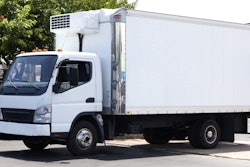The last few decades saw a major shift in consumer behavior, with the explosion of e-commerce forever changing how retailers logistically manage and deliver products to their customers. However, retailers and consumer packaged goods (CPG) companies should fasten their seat belts: The next five years are poised for even more disruptive change and it’s happening at breakneck speed.
Amazon’s recent announcement of free same-day delivery for Prime customers in certain markets upped the ante in retail logistics. Google, Walmart and eBay are testing similar concepts as well. Click-and-collect is another amenity rapidly gaining traction, particularly in grocery. Many retailers, such as Target and Macy’s, are embracing the concept of ship from store, thus turning their retail brick-and-mortars into fulfillment centers—making all inventory (online and in store) available to any consumer, anytime and anywhere.
For logistics and supply chain teams, this further complicates an already complex business. The recent Forrester Research TechRadar: Logistics Applications report agrees, noting that delivery times and availability are “just the tip of the logistics iceberg,” and stressing the urgency at which retailers must adopt and deploy new technologies to meet these disruptive changes.
Traditional supply chain models are no longer adequate; retailers cannot rely on pushing bulk merchandise to distribution centers, only to then pull it from pallet to store. Shorter product lifecycles, product range extensions, changes in shopping habits, free shipping and fierce competition for the fastest delivery time (not to mention the best price) are just a few of the many challenges in the new reality of retail logistics.
Meeting the Needs of the ‘Now’ Generation
As traditional retailers extend product ranges to compete with online players and fluctuating consumer spending behaviors, retailers and consumer brands must become much more nimble in order to cope with shorter product lifecycles and heightened consumer expectations.
The next generation of consumers are easily defined as the “I want it now” generation. After all, they are being conditioned to expect certain services and considerations by retailers who are rewriting the rules. Retailers may believe they do not compete with the likes of Amazon; however, in truth, they do. As customers understand what’s possible, they begin to expect the same access, speed and custom-tailored experience from all of the retailers they choose to frequent. And while this involves every corner of a retailer’s operation, meeting heightened consumer expectations can particularly strain a company’s logistics and supply chain operations.
How can companies meet the needs of the “now” generation? Here are several suggestions:
Focus on Logistical and Supply Chain Excellence
The Forrester TechRadar report highlights 20 applications that are vital to meeting today’s heightened consumer expectations. These include logistics and supply chain staples such as logistics applications, strategic network optimization, sales and operations planning (S&OP), global trade management, replenishment, transportation management and warehouse management, among others.
This is not the time for a retailer to say its supply chain is good enough. The demands of the “now” generation are only going to increase, and unless an organization can achieve new levels of logistical and supply chain excellence across all of its selling channels, it will ultimately disappoint consumers and lose its business.
Integrate Online and Offline Operations
Linking a retailer’s online and offline operations will become much more critical, too. A recent research study found that 70 percent of consumers used buy-online/pick-up-in-store or click-and-collect services, and consumers routinely expect this service to be available from brick-and-mortar retailers. However, only 23 percent of retailers have such a program in place, even though statistics show that these programs encourage more frequent store visits.
Retailers are just now beginning to understand the importance of turning their stores into fulfillment centers through ship-from-store capabilities. As leading retailers continue to offer this to consumers, others will be forced to jump on board—but what is the impact on their inventory, order management, replenishment and logistics systems? Competitive pressures are driving retailers to integrate their online and offline operations as never before in order to meet consumer expectations.
Take Operational Readiness to the Cloud
George Lawrie, vice president and principal analyst at Forrester Research, and author of the TechRadar report, suggests that retailers must build their cloud-based operational readiness. Every order has the potential to involve various suppliers and various carriers, so retailers should move into cloud-based systems with a model that focuses on orchestration rather than the application ownership model.
Manage by Specificity, Not by Exception
It is becoming more apparent that retailers need to focus on new and existing technologies that provide them with unprecedented availability and lead-time transparency in order for channel delivery, local availability and service levels to be maintained and to support brand promises. Retailers need to analyze data in near real time, paired with artificial intelligence, to produce actionable recommendations that are specific to the opportunities.
Choosing to use the tools of the past that fostered manage by exception, zone or cluster will lead to certain disaster. Leading retailers now understand that it is increasingly crucial to comply with the needs of the “now” consumer of 2020. Active adjustments to this new order will better position retailers to discover disconnects faster, sell more, decrease product returns, improve customer loyalty and grow profitably.












![Pros To Know 2026 [color]](https://img.sdcexec.com/mindful/acbm/workspaces/default/uploads/2025/08/prostoknow-2026-color.mduFvhpgMk.png?ar=16%3A9&auto=format%2Ccompress&bg=fff&fill-color=fff&fit=fill&h=135&q=70&w=240)


